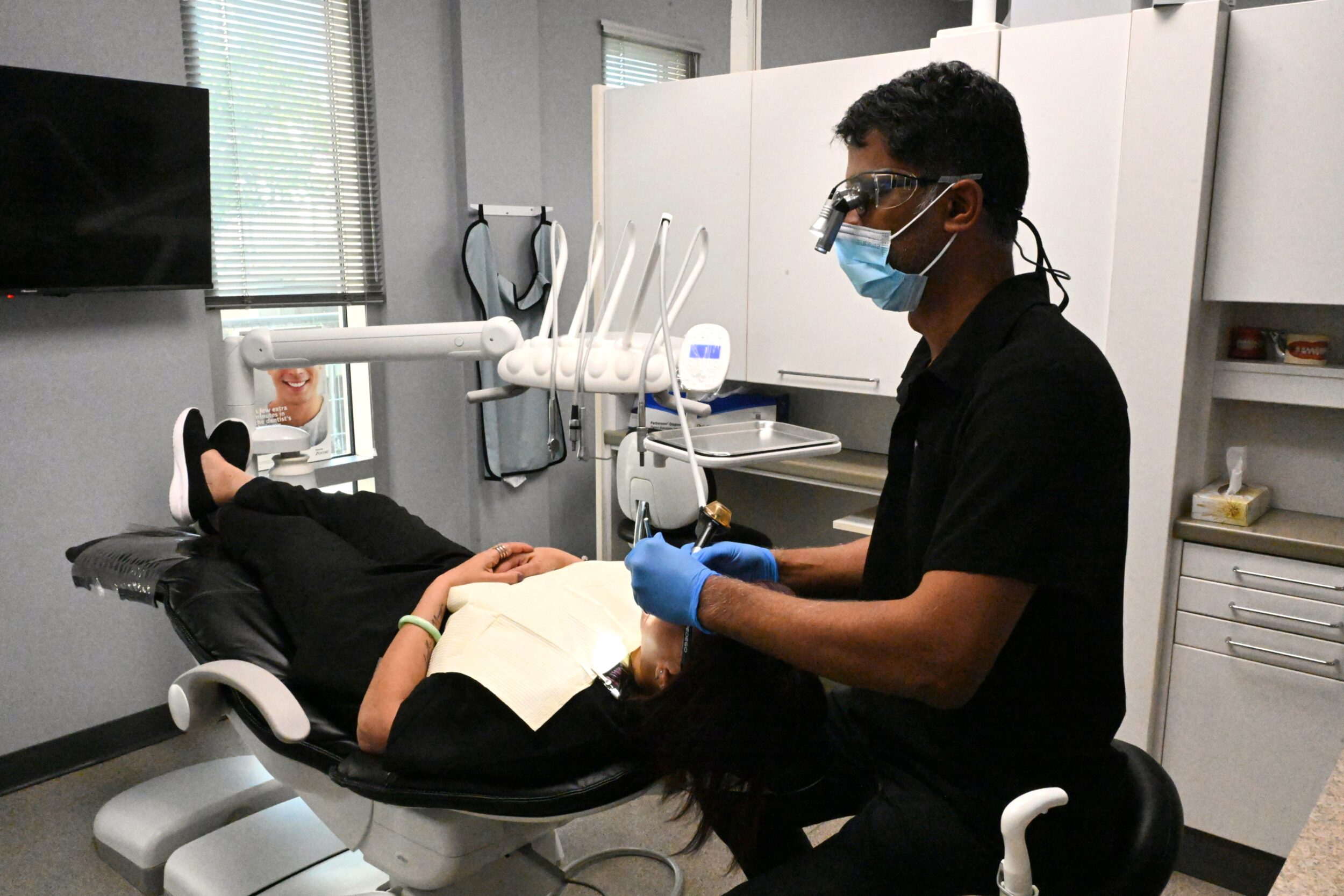Care For Your Child’s Teeth in Calgary, AB
Pediatric oral care consists of two main components: preventative care at the pediatric dentist’s office and preventative care at home. Despite the fact that infant and toddler caries (cavities) and tooth decay have become increasingly prevalent in recent years, a good dental strategy will eliminate the risk of both conditions.
Preventive oral care is intended to evaluate and preserve the health of the child’s teeth. Children should begin visiting the pediatric dentist for “well baby” checkups at the age of twelve months, according to the American Dental Association (ADA). Unless otherwise instructed, most children should visit the dentist every six months.

What is the best way for a pediatric dentist to care for my child's teeth?
Pediatric dentists examine teeth for signs of early decay, monitor orthodontic concerns, track jaw and tooth development, and provide information to parents. A pediatric dentist may also use topical fluoride and dental sealants in order to further reduce the child’s risk for dental problems.
During a routine dental visit, the child’s mouth will be examined, the teeth will be professionally cleaned, topical fluoride can be applied to the teeth to protect the enamel, and any parental concerns can be addressed. Pediatric dentists can demonstrate good brushing and flossing techniques, provide dietary advice, provide strategies for thumb sucking and pacifier cessation, and communicate with children on their level.
The pediatric dentist may coat molars with dental sealant when they emerge (usually between the ages of two and three). A sealant is applied to the fissures of the molars that are hard to reach, sealing out bacteria, food particles, and acid. It is possible for a dental sealant to last for many months or for many years, depending on the oral habits of the child. A dental sealant is an important tool for preventing tooth decay.
What can I do at home to help?
Good preventive care involves many more factors than brushing and flossing. These include:
Oral habits
In spite of the fact that pacifier use and thumb sucking generally cease over time, both can cause misalignment of the teeth. In the event that a pacifier must be used, it should be an “orthodontically” correct model. As a result, the risk of developmental problems such as narrow roof arches and crowding will be minimized. In order to stop thumb sucking, a pediatric dentist can suggest a strategy (or provide a dental appliance).
Brushing
Brush your child’s teeth at least twice a day with a soft bristled brush and a pea-sized amount of toothpaste. It is recommended that parents assist their children with brushing until they reach the age of seven and are capable of reaching all areas of the mouth on their own. It is always recommended that parents choose toothpaste that has been approved by the American Dental Association (non-fluoridated before the age of two, and fluoridated thereafter). After feeding babies, parents should rub the gum area with a clean cloth.
Diet
Children should be given a nourishing, well-balanced diet by their parents. It is recommended that very sugary diets be modified and that continuous snacking be discouraged. Bacteria in the mouth ingest leftover sugar particles after each meal and produce harmful acids that erode tooth enamel, gum tissue, and bone if they are not controlled. When possible, avoid sugary snacks and offer low-fat yogurt, celery sticks, and carrot sticks as alternatives.
General oral hygiene
Parents sometimes clean pacifiers and teething toys by sucking them. As well as eating utensils, parents may share them with their children. Parent-to-child transmission of harmful oral bacteria increases the risk of early cavities and tooth decay. Whenever possible, wash toys and pacifiers with warm water and avoid sharing spoons.
Flossing
Cavities and tooth decay are easier to form between teeth. The child is therefore at risk for developing between-teeth cavities wherever two teeth grow adjacently. During flossing, a pediatric dentist can demonstrate correct head positioning and provide tips for making the process more enjoyable.
Sippy cup use
During the transition from baby bottles to adult drinking glasses, sippy cups are an excellent transitional aid. As a result, small amounts of sugary fluid continually swill around young teeth when sippy cups are filled with milk, breast milk, soda, juice, or sweetened water – resulting in continuous acid attacks to the tooth enamel. A child should stop using a sippy cup between the ages of twelve and fourteen months – or as soon as they can hold a glass of water.
Fluoride
In addition to preventing mineral loss, fluoride promotes remineralization of tooth enamel. Fluorosis is a condition where white specks appear on the permanent teeth when too much fluoride is consumed, and tooth decay occurs when too little fluoride is consumed. Getting the fluoride balance right is crucial. If necessary, the pediatric dentist can prescribe supplements based on the child’s current intake.
You should consult with your pediatric dentist if you have any questions or concerns regarding the care of your child’s teeth.